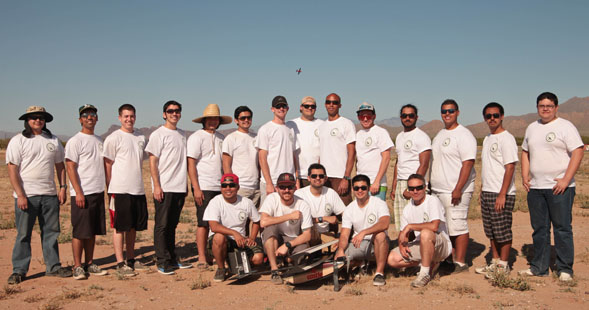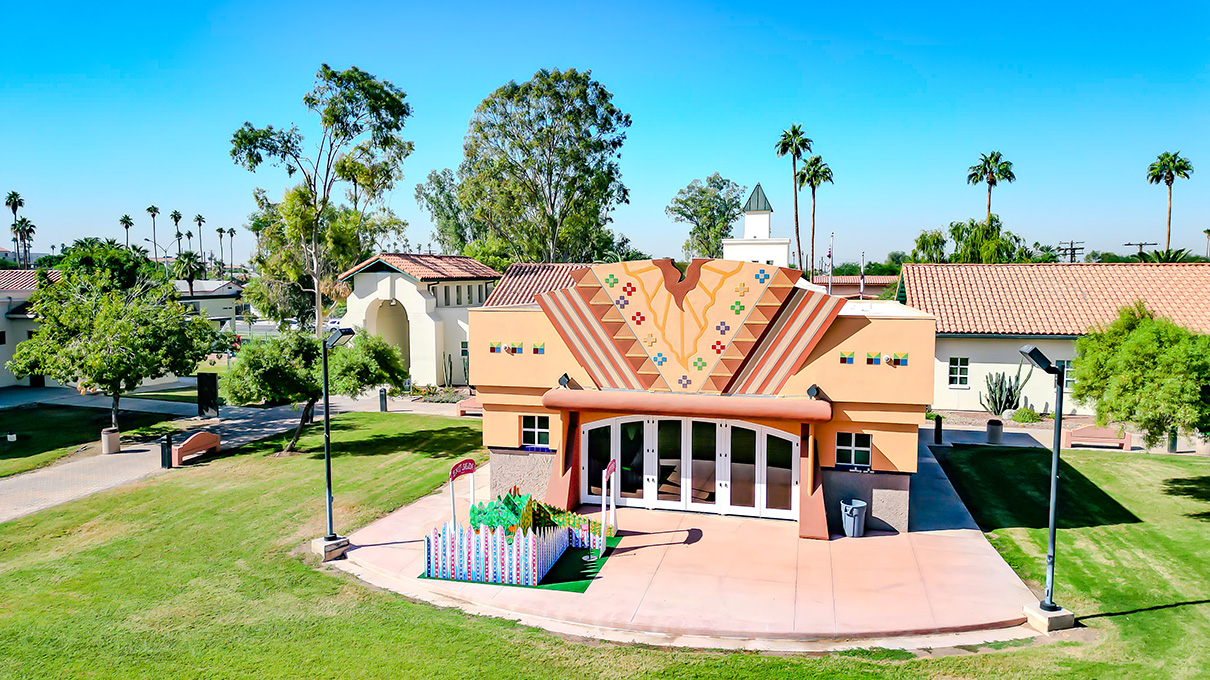Engineering Students Take Flight
The SDSU Design, Build and Fly Team placed second in the international Cessna/Raytheon Missile Systems Student Design/Build/Fly competition.

The San Diego State University "I Believe!" chant echoed through the Tucson desert April 19-21 at the Cessna/Raytheon Missile Systems Student Design/Build/Fly competition.
Students from colleges all over the world gathered in Arizona to showcase planes that took more than six months to build.
Aztec domination
SDSU took second place out of 81 teams, that included engineering powerhouses such as M.I.T., USC and Cornell. They were second only to the University of California Irvine and were recognized for producing the fastest plane in the competition.
SDSU's team leader, Jeromey Suko, a veteran and engineering-guru, learned from the team's success.
"Engineering was the baseline of this experience, but the biggest lesson for me was how to put together and manage a team," Suko said.
Suko dedicated countless hours to the competition. He organized meetings with sponsors, led build meetings, organized tours of sponsor facilities, purchased materials and delegated responsibilities. He was involved with the design work, writing the computational fluid dynamics report, and motor and structural testing.
"I've never seen someone put so much time and effort into a voluntary school team before and for that the entire team thanks him," said Daniel Taughinbaugh, a member of the Design, Build and Fly team.
About the competition
The competition is founded on the idea of fostering an interactive design experience for students. To be eligible to compete, participants had to submit design reports more than six months in advance to be approved by Cessna/Raytheon.
Once designs were approved, the building began. With minimal guidance from faculty, the SDSU students created a plane that could carry up to 5 pounds and travel as fast as 80 miles per hour.
On the weekend of the competition, a technical inspection was performed on every team's plane as a safety precaution.
In order to successfully complete a mission, planes had to:
- Load and carry "cargo" (Estes rockets)
- Take off within 30 feet
- Complete as many laps as possible in 4 minutes
Set for success
"In San Diego, we have a lot of support and resources," Suko said.
Northrop Grumman, General Atomics and Quatro Composites helped contribute to SDSU's Design, Build and Fly team's success.
Before submitting the final design to the competition, participants are allowed to consult with local engineering companies. If the company approves of the design, it can opt to sponsor the team.
SDSU aerospace engineers
The SDSU Aerospace Engineering Program has a history of successful alumni, including members of the Mars Rover mission. Alumni have achieved jobs at prestigious engineering firms, such as NAVAIR, General Atomics and NASA JPL.
"The Aerospace Engineering Program at SDSU offers a rigorous curriculum that in addition to fundamental theory, provides activities and opportunities to develop practical skills in applying theory to solving problems in aerospace engineering," said Satchi Venkataraman, associate professor and graduate adviser of the Aerospace Engineering Program.
"The SDSU engineering program gave us the skills needed to do many of the calculations necessary for this competition," Taughinbaugh said.


